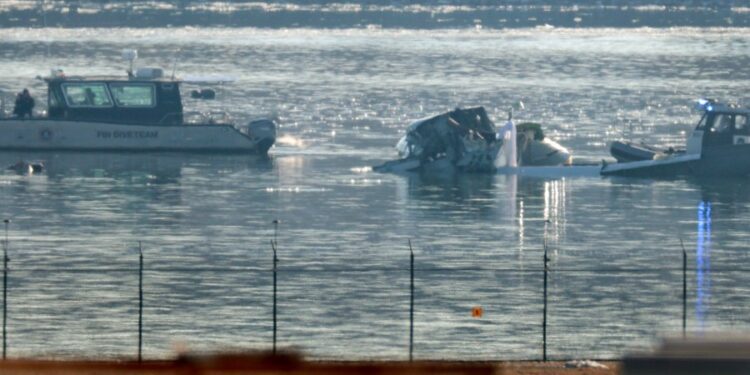
WASHINGTON (DC News Now) — The U.S. Army Corps of Engineers (USACE) released a timeline Saturday for removing the American Airlines plane and Army Black Hawk helicopter from the Potomac River after the two collided near Reagan National Airport on Jan. 29.
With assistance from the U.S. Coast Guard and U.S. Navy’s Supervisor of Salvage and Diving, on Friday, Jan. 31, crews began preparing for salvage operations with the arrival of a crane barge, dive boats, deck barges with spuds and two surface-supplied dive systems.
Along with surveying the wreckage, crews have also been working to recover the bodies of those who were on board the aircraft.
Sixty-seven people died as a result of the mid-air collision. As of Saturday afternoon, D.C. authorities said 42 bodies have been recovered.
According to the announcement from the USACE on Saturday, on Monday, Feb. 3, crews are expected to begin removing the jet, pending the results of surveys that will determine the range of the debris field and allow for a plan to remove it effectively.
The USACE said that removing the jet’s remnants is expected to take three days.
After that, crews will focus on recovering the Black Hawk helicopter.
The USACE noted that “large lifts” should be completed on or around Feb. 8 and that from there, crews will focus on clearing remaining debris with salvage baskets before “demobilizing equipment” by Feb. 12.
The agency emphasized that all salvage operations will be completed “in close coordination” with the Unified Command to “ensure strict adherence to the central priority of the dignified recovery of missing flight passengers and personnel.”
If crews find any remains during their salvage efforts, work will be stopped until the proper authorities are contacted.
“The level of coordination both behind the scenes and out on the Potomac is exceptional,” said Baltimore District Commander Col. Francis Pera. “As part of the Unified Command working diligently to remove obstructions from this historic waterway, we have not and will not lose focus of what is most important – the safety of our crews and accounting for those still missing to bring closure to their families and loved ones.”






